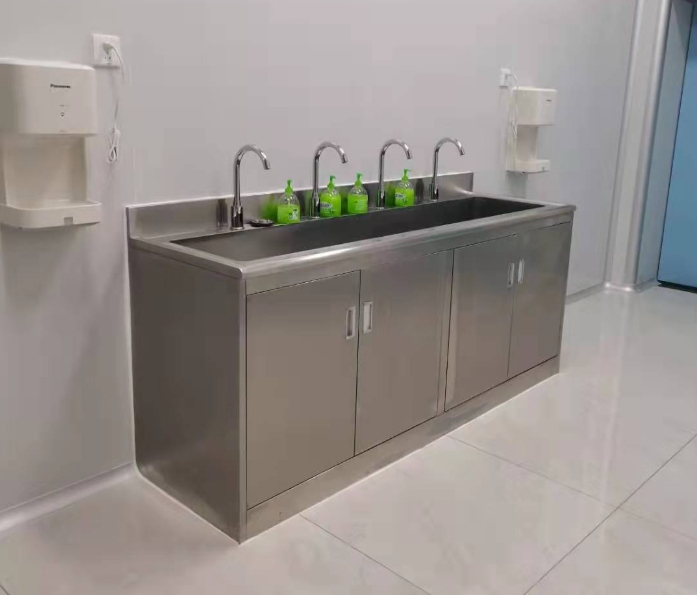Table of Contents
In the world of cutting-edge scientific research and healthcare, maintaining a sterile environment is not just a priority—it’s a necessity. As the frontline defense against contamination, anti-microbial lab furniture plays a crucial role in ensuring the integrity of experiments and the safety of personnel. This comprehensive guide explores the vital aspects of germ-resistant furniture and lab hygiene solutions that are revolutionizing sterile environments.
The Critical Role of Anti-Microbial Surfaces in Modern Labs
Why Sterility Matters
Biological Research: Where even minor contaminations can skew results.
Pharmaceutical Development: Ensuring drug purity and efficacy.
Medical Research: Protecting both samples and researchers from cross-contamination.
Food Safety Testing: Maintaining strict hygiene standards for public health.
Forensic Laboratories: Preserving the integrity of evidence.
In these high-stakes environments, every surface becomes a potential battleground against microbial growth.
Cutting-Edge Materials in Anti-Microbial Lab Furniture
The fight against microbial contamination has spurred innovations in materials science. Here’s a look at the frontrunners:
Anti-Microbial Laminates
- Copper-Infused Surfaces: Utilizing copper’s natural antimicrobial properties.
- Silver Ion Technology: Embedded silver ions that disrupt bacterial cell membranes.
- Nano-Coatings: Microscopic particles that create an inhospitable surface for microbes.
Stainless Steel: The Stalwart of Sterility
- Medical-Grade Stainless Steel: Non-porous surface resistant to bacterial colonization.
- Electropolished Finishes: Ultra-smooth surfaces that leave nowhere for bacteria to hide.
Engineered Composites
- Phenolic Resin: Dense, non-porous material with inherent antimicrobial properties.
- Epoxy Resins: Seamless surfaces that can be impregnated with antimicrobial agents.
Smart Materials
- Photocatalytic Coatings: Surfaces that use light to break down organic contaminants.
- Self-Cleaning Nano-Materials: Advanced coatings that actively repel microbial adhesion.
Design Strategies for Maintaining Sterile Environments
Effective lab hygiene solutions go beyond materials—smart design is crucial:
Seamless Construction: Minimize joints and seams where bacteria can accumulate.
Rounded Corners: Easier to clean and less likely to harbor contaminants.
Modular Systems: Allow for easy removal and thorough cleaning of components.
Integrated Services: Built-in utilities reduce the need for external, hard-to-clean attachments.
Touchless Features: Sensor-operated drawers and cabinets to reduce contact points.
Optimized Airflow: Furniture design that doesn’t impede HVAC efficiency.
Real-World Impact: Labs Transformed by Anti-Microbial Furniture
Case Study 1: Metropolitan Hospital Lab Overhaul
The microbiology department at Metropolitan Hospital faced recurring contamination issues affecting their test results. After implementing a comprehensive anti-microbial furniture system:
- 70% reduction in surface bacterial counts
- 40% decrease in false-positive culture results
- 25% improvement in staff confidence in lab cleanliness
Case Study 2: PharmaTech’s Clinical Research Facility
PharmaTech’s new clinical research lab utilized state-of-the-art germ-resistant furniture throughout:
- 50% reduction in time spent on cleaning protocols
- 80% decrease in contamination-related experiment failures
- 30% increase in successful drug trials attributed to improved sterility
Implementing Anti-Microbial Furniture: Best Practices
Comprehensive Approach: Don’t mix antimicrobial and standard furniture—consistency is key.
Staff Training: Educate personnel on proper use and maintenance of antimicrobial surfaces.
Regular Testing: Implement routine microbial testing to verify effectiveness.
Integrated Cleaning Protocols: Develop cleaning regimens that complement antimicrobial properties.
Future-Proofing: Choose modular systems that can adapt to evolving research needs.
The Future of Sterile Lab Environments
As technology advances, we can expect to see:
- Active Sterilization: Furniture with built-in UV-C light sterilization capabilities.
- Real-Time Monitoring: Integrated sensors that alert staff to microbial presence.
- Biodegradable Antimicrobials: Eco-friendly solutions that don’t compromise on efficacy.
- Customized Microbial Protection: Surfaces tailored to combat specific pathogens relevant to each lab’s focus.
Conclusion: Investing in the Foundation of Scientific Integrity
In the realm of high-stakes research and healthcare, anti-microbial lab furniture is not a luxury—it’s a fundamental necessity. By integrating these advanced materials and design principles, laboratories can create environments where sterility is not just maintained but enhanced, paving the way for groundbreaking discoveries and life-saving innovations.
Remember, in the battle against microscopic threats, your lab furniture is your first line of defense. Choose wisely, and let your research thrive in an environment of uncompromising cleanliness.




